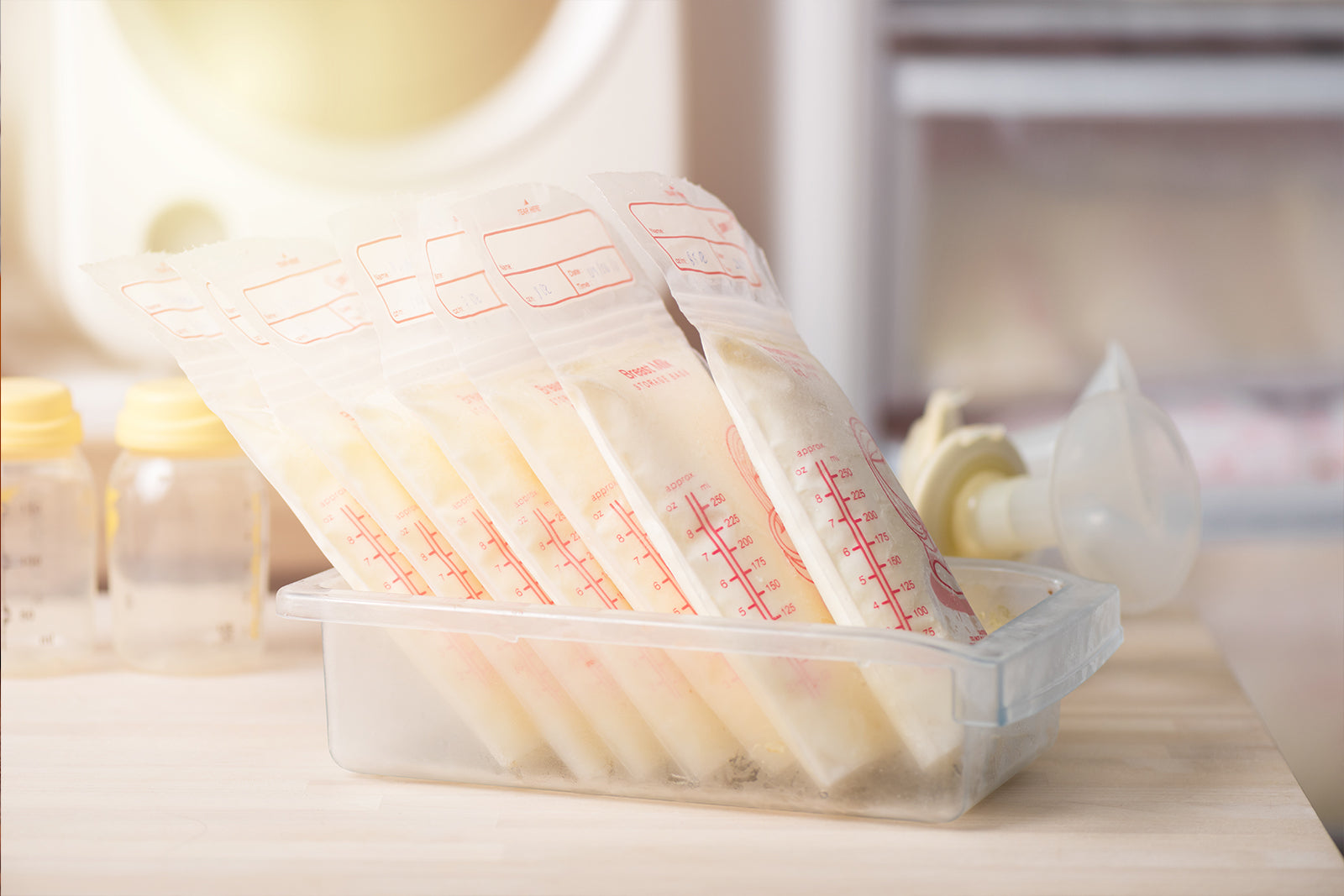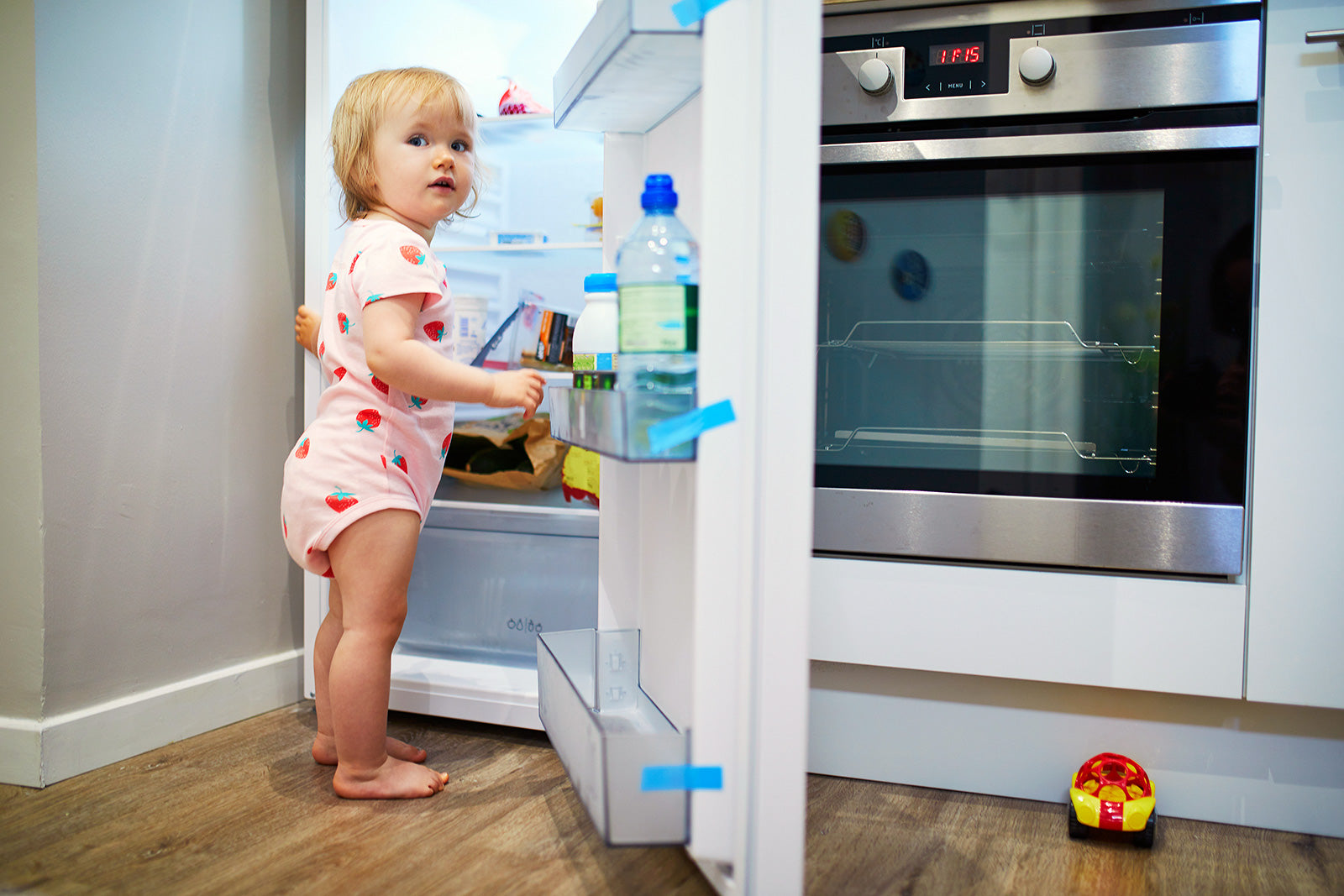How Long Is Breast Milk Good For?

As a parent, you've probably heard the phrase "liquid gold" tossed around to describe breast milk. And it truly is precious, especially when you’ve put in the time, energy, and maybe even a little sweat to pump it. Whether you’re a full-time pumper, an occasional expresser, or somewhere in between, one of the biggest questions you’ll face is, “How long is breast milk good for?”
The last thing you want is to pour time - and your milk - down the drain because it wasn’t stored correctly. So let’s break down the guidelines for breast milk storage, how to know if it’s still good, and a few tips to help make the whole process a little easier.
Breast Milk Storage - The Basics
Breast milk isn’t like any other food in your kitchen. It’s full of antibodies, nutrients, and immune-boosting properties. But, just like any fresh food, breast milk has a shelf life. Once expressed, it’s susceptible to bacteria, temperature changes, and the general clock ticking. Knowing how long breast milk lasts can be a bit of a juggling act, but let’s demystify it.
Freshly Pumped Breast Milk - The Golden Window
After you’ve pumped, fresh breast milk is safe to use for 4 hours at room temperature (up to 77°F or 25°C). This is your golden window for using the milk without any extra steps.
If you know your baby will be ready to feed soon, there’s no need to refrigerate it right away. Keeping it at room temperature for a few hours is convenient and gives you a little wiggle room to avoid the fridge shuffle. However, if you’re uncertain or think there might be a delay, refrigerating breast milk is a safer bet.
Storing in the Refrigerator - Your 4-Day Friend
If you need to keep breast milk fresh a bit longer, the refrigerator is your best friend. You can safely store freshly pumped milk in the fridge for up to 4 days.
- Use the back of the fridge: This part of the fridge has a more consistent temperature, which keeps the milk from getting too warm.
- Label and date your containers: This helps you keep track of which milk to use first, and you won’t have to play the “guess the freshness” game later on.
Quick Tip: If your baby doesn’t finish a bottle of breast milk, it can stay in the fridge for up to 2 hours before needing to be discarded. Sadly, it’s a “use it or lose it” scenario, but it’s better safe than sorry.
Freezing Breast Milk - The Long-Term Solution
If you want to keep breast milk for longer than four days, freezing is the way to go. Frozen breast milk is safe for up to 6 months in a regular freezer and up to 12 months in a deep freezer.
- Leave space at the top of your container: Breast milk expands as it freezes, so leaving a bit of room prevents it from bursting.
- Lay bags flat: If you’re using storage bags, laying them flat will save space and make it easier to thaw.
- Label, label, label: Write down the date and quantity. Frozen milk can sometimes change color or separate, so knowing exactly when you stored it gives you peace of mind.
Thawing and Using Frozen Breast Milk - A Quick Guide
When it’s time to use that frozen stash, there are a few things to keep in mind. Thawed breast milk takes a little bit of planning, but it’s simple once you get into a rhythm.
Safe Thawing Methods
- Refrigerator Thawing (Best option): Move the frozen milk to the fridge and let it thaw slowly overnight. This is the safest method since it keeps the milk at a consistent, cool temperature.
- Warm Water Thawing: If you’re in a rush, place the sealed bag or bottle in a bowl of warm water. Avoid boiling water or direct heat; these can destroy some of the milk’s beneficial properties.
Once Thawed
Once you have thawed breast milk, it can stay in the refrigerator for up to 24 hours. After that, you’ll need to discard it, as it’s no longer safe to use.
Important Note: Thawed breast milk should never be refrozen. Refreezing can cause the milk to lose nutrients and potentially spoil.
How to Know if Breast Milk Has Gone Bad
While breast milk storage guidelines are generally reliable, mishaps can happen. Maybe the fridge was left open too long, or you lost track of the storage date. Here’s how to tell if breast milk has gone off:
- Smell Test: Fresh breast milk usually has a mild, sweet smell. If it smells sour or rancid, it’s best to toss it. Trust your nose here.
- Visual Clues: It’s normal for breast milk to separate in the fridge, with a layer of cream on top. Gently swirl it to mix. If it doesn’t mix or looks “chunky” after swirling, it may have spoiled.
- Taste Test: If you’re unsure, taste a tiny bit. Spoiled milk has a sour taste, so you’ll know right away.
Remember, spoiled milk won’t necessarily hurt your baby, but they’re likely to reject it because of the taste and smell.
Storage Tips for Breastfeeding on a Tight Schedule
If you’re constantly on the go or working with a packed schedule, managing breast milk storage can feel overwhelming. Here are a few tips to help make the process easier:
- Batch Pump and Freeze: Some moms find it helpful to do a “batch pump” every day or two, setting aside enough milk for immediate use and freezing the rest.
- Pre-Portion Before Freezing: If you know roughly how much your baby drinks in one feeding, portion out milk into bags before freezing.
- Use Clear Containers or Bags: Clear containers or bags let you quickly check on milk quality without opening everything up.
- Labeling System - Date, Amount, and Notes: Sometimes milk pumped at different times of day can taste slightly different. Consider adding a note with each bag (like “morning” or “afternoon”).
Common Myths and Misconceptions
Let’s clear up a few misconceptions about breast milk storage so you can feel fully confident in your routine.
-
Myth: If breast milk has a metallic or soapy smell, it’s bad.
Truth: Some moms’ milk develops a soapy or metallic smell due to an enzyme called lipase. It’s still safe, though some babies might reject it. Scalding the milk (heating it just before boiling) can deactivate lipase if it’s an ongoing issue. -
Myth: Thawed breast milk is just as good as fresh.
Truth: While thawed breast milk retains most of its nutrients, fresh milk is generally a bit better because freezing can destroy some immune-boosting cells. -
Myth: Thawed milk that smells a little off is always bad.
Truth: Thawed breast milk can smell different from fresh because of the freezing and thawing process. Use your judgement.
At the end of the day, how long breast milk is good for comes down to following a few simple storage tips and trusting your instincts. You’re already doing a fantastic job by pumping, storing, and feeding your baby with care. So take a deep breath, give yourself credit, and know that your baby is getting all the goodness of your amazing liquid gold.
And to make feeding much easier and mess-free, look into our bokee baby bottle holder! Once you’ve pumped, you can safely transfer your breast milk into a bottle while it’s in the holder, ensuring complete cleanliness. Simply put, it is the perfect addition for parents who are always on the move!
No matter where you are on your feeding journey, remember that this is just one part of the incredible bond you’re building with your baby. Keep going, keep trusting yourself, and keep celebrating the little wins - like mastering the art of breast milk storage.
If you want some more parenting info, check out our other blogs!




